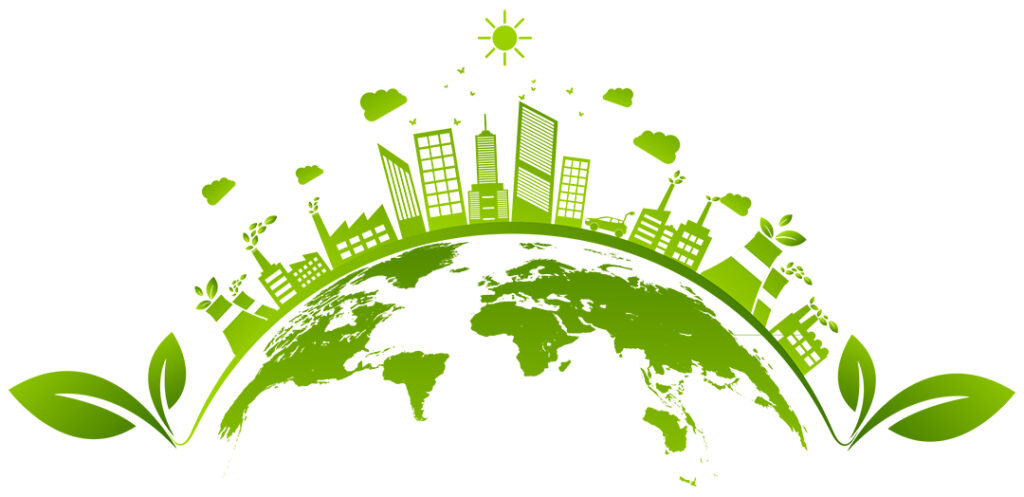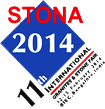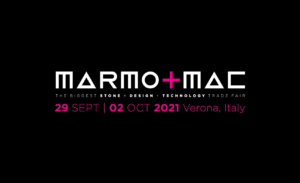The Tree of Life. The Project.
The Tree of Life was born from the drawing of […]
Via Dante Alighieri 1 F
Rezzato - Brescia Italy
t +39 030 2190627

In recent years, the term sustainability has known a very fast diffusion, used daily, even exploited, interpreted, underestimated, it has gradually been enriched with such and many meanings that it seems increasingly difficult to try a complete and exhaustive definition. Perhaps, while simplifying, it may be useful to compare this concept to that of load capacity. Suppose we are engaged in a 5-day marathon and our body is trained to run a maximum of 30 kilometers per day. If we had to travel 40 Km or more a day we would be beyond our load capacity, that is, beyond the capacity that our body has to regenerate and be ready to retrace as many kilometers the next day.
At first, perhaps, we would be able to recover, but we could not sustain a faster pace than our physical abilities for long. So 30 kilometers a day would be sustainable for us as well as no. If we did not take this into account, something irreversible could probably happen to us, at least we would not be able to finish the marathon. Even the environment in which we live, despite being equipped with numerous potentials that allow its regeneration, has its own carrying capacity which, if exceeded, will not allow recoveries and the consequences could cause irreversible transformations of the planet.
The origins of the concept of SUSTAINABILITY date back to the 1960s, with the first publications on the environmental and demographic crisis and the beginning of the debate on the relationship between economy, environment and population. Treated at the first UN conference on the environment in the 1970s, in Stockholm in 1972, from the Rio Conference in 1992 to today, sustainability has taken on the dimensions of a concept that can be associated with every production activity of man as “the ability to control the transformation of physical and biological agents into materials and objects, within an overall and unitary framework that is the earth”: in other words it expresses the attempt to govern the relationship between development and exploitation of resources. The most widespread definition of sustainable development is that originated by the World Commission on Environment and Development in 1987, according to which development is defined as sustainable if it is able to satisfy “..the needs of the current generation without compromising the ability of future generations to respond to them”. This statement, mainly of an ecological nature, has animated the international debate, leading to numerous insights and further developments of the concept.
The combination of the term SUSTAINABLE with architecture has long been symptomatic of a new concept of living, according to which, in addition to the implementation of ‘green‘ and the use of ECOFRIENDLY design and plant solutions, also the materials used play an important role. A building that consumes little energy and requires a large amount of it for construction is a true contradiction. At the same time, the use of certified materials and alternative energy sources are not always enough to guarantee the SUSTAINABILITY of a project, in fact, a certified material imported from a far country, with a limited duration of use, must be considered in the light of these two negative points.
For this reason, even a non-renewable material such as BOTTICINO MARBLE CAN BE CONSIDERED SUSTAINABLE as it is the result of a production process that requires a limited amount of energy (as the processing is carried out 100% local), low polluting emissions, a longer life cycle than that of other materials produced from renewable sources, the absence of harmful emissions (in particular in the domestic environment).

From Roman age Botticino Classico marble is:
• 100% LOCAL
Because the proximity between quarries and processing sites minimizes transport costs and pollution factors.
• Non-toxic
Because it does not release vapours, gases, fumes, or fine dust inside domestic environments, it does not have processing residues after installation and does not favor the birth of mold and microorganisms, bacteria, fungi.
It is anti-bacterial, anti-allergic, hygienic.
• Durable
Because when it is properly laid, it guarantees an unlimited duration; its life cycle is higher than that of any other building material, so it is also economically advantageous.
• Eco-friendly
Because it exists in nature, it is neither manufactured nor created in a laboratory. Furthermore, its cultivation is subject to numerous environmental constraints including the recovery of active and abandoned sites.
• Fireproof
Because it falls within A1 fire reaction class of building materials (UNI EN 13501-1) and, in case of fire, it does not propagate or feed flames and it never emits harmful and / or harmful substances.
• Insulating
Because it has natural characteristics that may potentially ensure that buildings boast excellent energetic properties as well as excellent thermal and acoustic performances.
• Recyclable
Because in case of disposal for demolition or removal it can be reusable indefinitely.
As already stated, “Sustainable architecture” means not only the use of local and natural materials or technologies in order to save energy (photovoltaics, low-emission systems), but also a global control of the different stages of the entire building cycle: design, construction, management, up to demolition and recycling, which can only be implemented by creating a system of mutual benefits between the various operators involved. The world of construction is among the most involved sectors: buildings and the construction sector are currently responsible for 39% of all CO2 emissions in the world, more than the transport sector; moreover, according to NGO estimates, in 2050 over 70% of the planet’s population will be concentrated in large urban agglomerations. This latter figure would be enough to justify the ever-increasing attention to the “Green Building”, identifying a new approach to building that has as objective to design, build and manage the building in a sustainable and efficient way, certifiable by an independent third party.
Even within a more comprehensive assessment, the BOTTICINO CLASSICO MARBLE as a natural stone is able to guarantee a significant contribution as it was possible to verify through an analysis that have obtained the LEED certification (Leadership in Energy and Environmental Design), which is a voluntary certification protocol born in the United States in 1993 on the initiative of the USGBC (United States Green Building Council) which, thanks to its worldwide recognition, is an excellent test to evaluate the green vocation of BOTTICINO CLASSICO MARBLE.

This rating tool guarantees the voluntary certification of “green” buildings based on the analysis of the entire construction life process and the attribution of credits (scores) established for each of the seven thematic areas identified by the following definitions:
– site sustainability;
– water management;
– energy and atmosphere;
– materials and resources;
– internal environmental quality;
– innovation in the design process;
– Regional Priority..
The final certification level is obtained from the sum of the credits attributed for each of them, divided into:
• Leed Platinum certification
• Leed Gold certification
• Leed Silver certification
• Leed Base certification
As evident, the standard interacts on the entire process of construction or redevelopment of a building, from the design to the subsequent maintenance, furthermore the entire building is also evaluated for its location, its access to networks, usability and sustainability with respect to resource management or user comfort. The greater the relevance to the requirements, the higher the score obtained.
The European Union, sensitive to the objectives of Kyoto Protocol, aims to reduce more and more, by low, greenhouse gas emissions. The new targets are set for 2030 and the goal is to drop emissions by 40% (compared to 1990 levels). This means that in the years to come, the laws, the designers and the clients will require, both for the construction of new buildings and for the renovations of the existing ones, increasingly stringent quality and sustainability certifications and it is necessary to think that those who will not be able to producing them will be out of business.
The stone industry had already answered this question, anticipating the times, years ago with the “GUIDELINES FOR THE APPLICATION OF LEED CREDITS FOR NATURAL ORNAMENTAL STONE, for new buildings and renovations”. This shows that natural stones and obviously BOTTICINO CLASSICO MARBLE satisfy the inquiries not only for their physical-mechanical characteristics that distinguish them, but for little-known requirements by designers, clients, entrepreneurs too. Through the information contained in the guidelines, it is possible to identify, within each of the thematic areas mentioned above, the contribution that Botticino Classico marble can guarantee for the formation of the overall score.
The contribution relating to the “site sustainability” is demonstrable, since the BOTTICINO CLASSICO MARBLE, used in the construction of floors without rigid support substrates, promotes the development of bio-diversity; moreover, laid with “draining” techniques (for example by means of joints and permeable substrates) it is able to minimize or mitigate the surface runoff of rainwater and favor the natural infiltration of runoff water. Furthermore, the BOTTICINO CLASSICO MARBLE, used in the construction of flat roofs, in the execution of internal and external coatings, thanks to its thermal mass, contributes to reduce significantly the amount of energy used for heating and cooling the building, collaborating in satisfying the requirements relating to the thematic area “energy and atmosphere”. Even in the area of “materials and resources”, the quarrying and processing 100% local can play an important role.
Moreover, it has been pointed out that, in case of renovations, the pre-existing marble elements (external facing, coverings, etc.), integral with the load-bearing ones, if properly stressed, can cooperate to the structural functions of the latter and in a city like Brescia, for example, where BOTTICINO CLASSICO MARBLE is present in almost all its historical buildings, this represents an authentic added value.
When removed, BOTTICINO CLASSICO MARBLE products are increasingly recovered and reused, vice versa, all the scraps obtained during the demolition and construction phase are destined for the production of gravel, originating raw / secondary materials based on the specific rules of use.
Finally, methods of installation with low emission components for sealing and finishing, make BOTTICINO CLASSICO MARBLE products able to satisfy the parameter called “internal environmental quality”.
Today, modern quarrying and processing technologies such as: diamond tool cutting, use of robots and numerical control machines, advanced systems for the consolidation and treatment of materials and surfaces, have considerably increased the stereometric potential of this famous marble from Brescia, guaranteeing the achievement of satisfactory evaluations also in the thematic area: “innovation in the design process”.
In addition BOTTICINO CLASSICO MARBLE can be made using energy from renewable sources, can include recycled or recyclable packaging and, of course, has an unrivalled life cycle.
Today this reinterpretation in a sustainable key of BOTTICINO CLASSICO MARBLE allows to redefine the terms of this lithotype which is now an integral part of the so-called SMART MATERIALS category, able to be compact and transparent, apparently heavy and structurally light; either ornament or structural component.
For this reason, it is possible to state that in contemporary architecture, BOTTICINO CLASSICO MARBLE has passed from an evocative material to an innovative material. It is not a coincidence that, in an essay, German Architect Thomas Herzog indicated stone, especially in renovation and recovery interventions, as one of the few coating materials, able to protect effectively the stratigraphy of thermal insulation. It is worth remembering that “… 90% of buildings in Europe are not in the category of new constructions but in that of existing ones”. However, what in the next few years will increasingly contribute to strengthening the role of stone, will be the indissoluble link with the places of origin, the importance of the geographical connotation that already finds a synthesis in the names: BOTTICINO CLASSICO MARBLE.
The guarantee of a precise identity, of a close relationship with the quarrying and processing area, represent a unique opportunity to look at this material as an antidote against the danger of homologation and cultural impoverishment. Since it is now well established that only through local activity it is possible to correct those distortions produced in architecture by the global market: the “star system” effect determined by the activity of a few great talents who, following the demands of the markets, have created outstanding architectures …….that can be located anywhere. The option, now, is to look for natural stone products, designed for a global or international market but made according to local knowledge, culture and laws.
Written by Architect Andrea Botti
1. The rating (evaluation) is a method used to classify economic matters. (Editor’s note)
2. The definition of the thematic areas and their relative scores, refers to the contents developed for the LEED Manual in Italian version. (Editor’s note)
3. Document produced by the Working Group: TASK FORCE SUSTAINABLE STONE, promoted and participated by: Confindustria Marmomacchine, Marmomacc – Veronafiere, Assomarmisti Lombardia, Centro Servizi Lapideo Vco, Centro Servizi Marmo – Videomarmoteca, Cet Servizi, Consorzio Marmisti Bresciani, Consorzio Marmisti di Chiampo, Distretto del Marmo e delle Pietre del Veneto, Distretto delle Pietre e del Porfido Trentino, POLITeca – Politecnico Di Milano – 2011.
In collaboration with: Habitech and Trentino Sviluppo.
4. T. Herzog, Glocal Stone, ed. Arsenale, 2011, (Vr)
SPECIAL EXPO 2015

The Tree of Life was born from the drawing of […]

29 JAN – 1 FEB 2015 We will be present […]

22 – 25 OCTOBER 2014 We will be present into […]

Verona, 24-27 settembre 2014 We will be present into Indoor […]

Bangalore – India 12-15 February 2014 Stall no.163/164 – Hall […]

For the purchase of the catalogue please contact: archandstone@marmo-botticino.it Or […]

This year the Consortium of Botticino Classico Marble Producers will […]